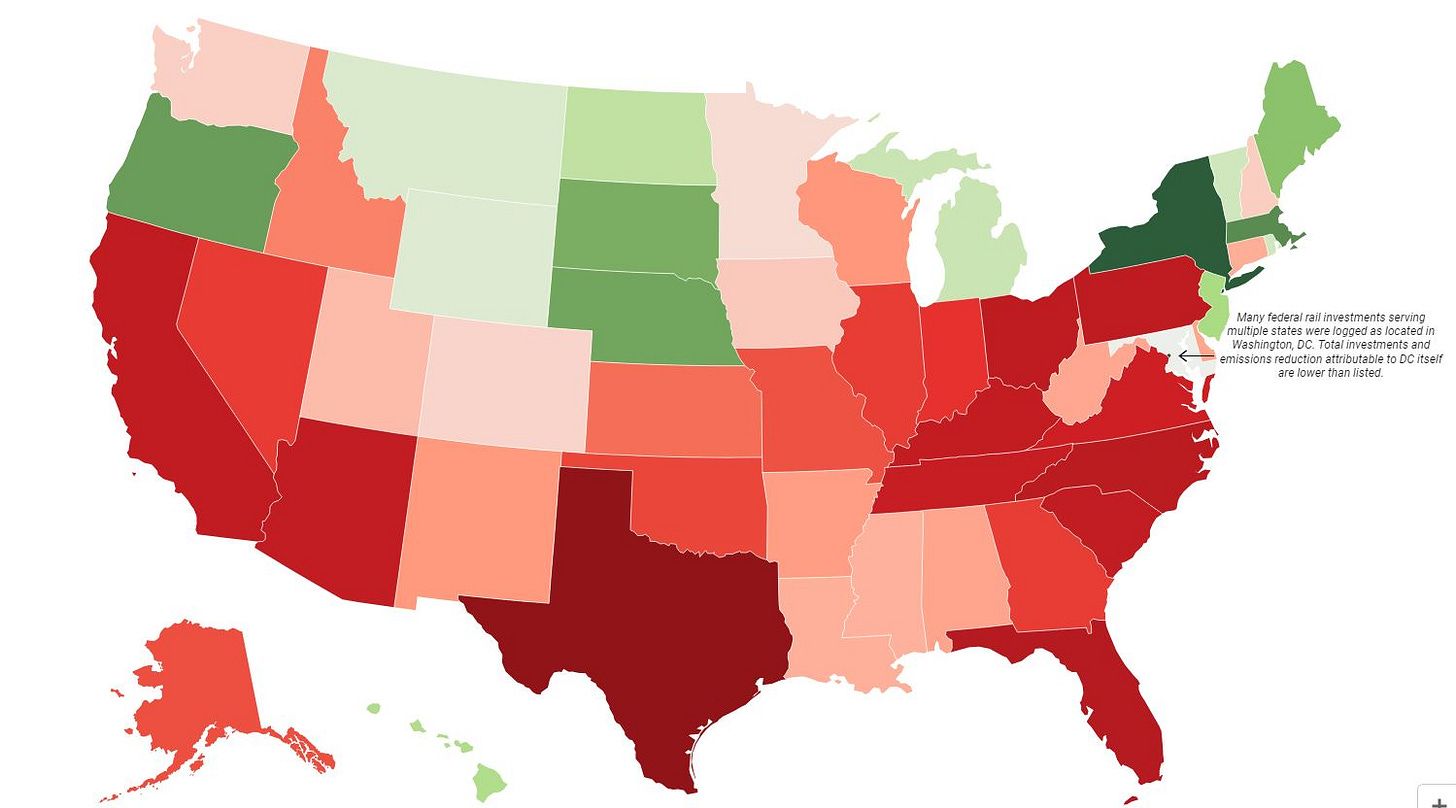This post is composed of links to relevant articles, using gift links whenever possible.
Why are Connecticut bridge replacements are so expensive? Infrastructure projects in Connecticut are exceptionally expensive even by the standards of other Northeastern American rail projects, let alone European ones. Read about the Cos Cob Bridge Replacement (and more) in Pedestrian Observations.
Why are we so bad at building rail? This article is not only about trains, but it has a lot about high-speed rail and US systems. The author says, “I do not want America to become China. But I do want it to be able to build trains.” (New York Times gift link)
Related reading from previous newsletter
California bullet train faces a Trump-sized derailment (Fresno Bee)
The Trump Administration's Expected Impact on US Rail (Holland & Knight)
Big bucks in Massachusetts
Some projects have got the big bucks. We’ll have more to say about South Coast Rail in a forthcoming post about funding, or the lack of it, in western Massachusetts. South Coast Rail, says a recent MassDOT release: “Phase 1 is fully funded with $1B in State revenue bonds, and construction is complete.” And the MBTA is on schedule to begin South Coast Rail passenger service the morning of March 24, 2025.
We’re all for new passenger rail, but South Coast Rail is known for exceptionally high project costs relative to potential benefits. We welcome expert comment on this.
Spending and climate
When I asked Myron Orfield whether we’re still building sprawl, he pointed to President Biden’s 2021 Infrastructure Investment and Jobs Act (IIJA) as “a major engine of sprawl.” Enabled by the IIJA—which was hailed as a significant step toward climate resiliency—most states are now spending enormous sums on expanding highways, a useless exercise that research has consistently shown only induces more demand for driving and increases congestion and sprawl. States are free to pursue this recklessness because, as a recent Transportation for America report explains, Congress failed to include guardrails to prevent it, opting instead to leave the law’s implementation “flexible.” Alarmingly, the report states, “these spending choices [...] are directly undoing the emissions reduction impact of other climate focused investments.” Read the rest in Current Affairs.
From Transportation for America: “State DOT choices drive up emissions”:
Analysis from the Georgetown Climate Center (GCC) and the Rocky Mountain Institute (RMI) found that, depending on their spending choices, states could significantly influence transportation emissions. In a scenario analysis, they found that IIJA-funded projects could either reduce or increase millions of metric tonnes of CO2 equivalent (CO2e) greenhouse gas emissions through 2040 relative to baseline emissions projections, depending on the investment decisions made by the transportation agencies that control the funds. Read more.
Connecticut isn’t looking so good (another reason to get onboard):
NYS 1.8M Tonnes of C02e reduced relative to baseline
MA 727.4K Tonnes of C02e reduced relative to baseline
Connecticut 419.5K Tonnes of C02e increased relative to baseline
All content in Train Time is shared under a Creative Commons License (CC BY-NC-ND):
Attribution (BY) – Always credit Train Time as the original creator with a tag or link to https://traintime.substack.com.
Non-Commercial (NC) – Content cannot be used for commercial purposes.
No Derivatives (ND) – Content may not be modified, adapted, or repurposed.





